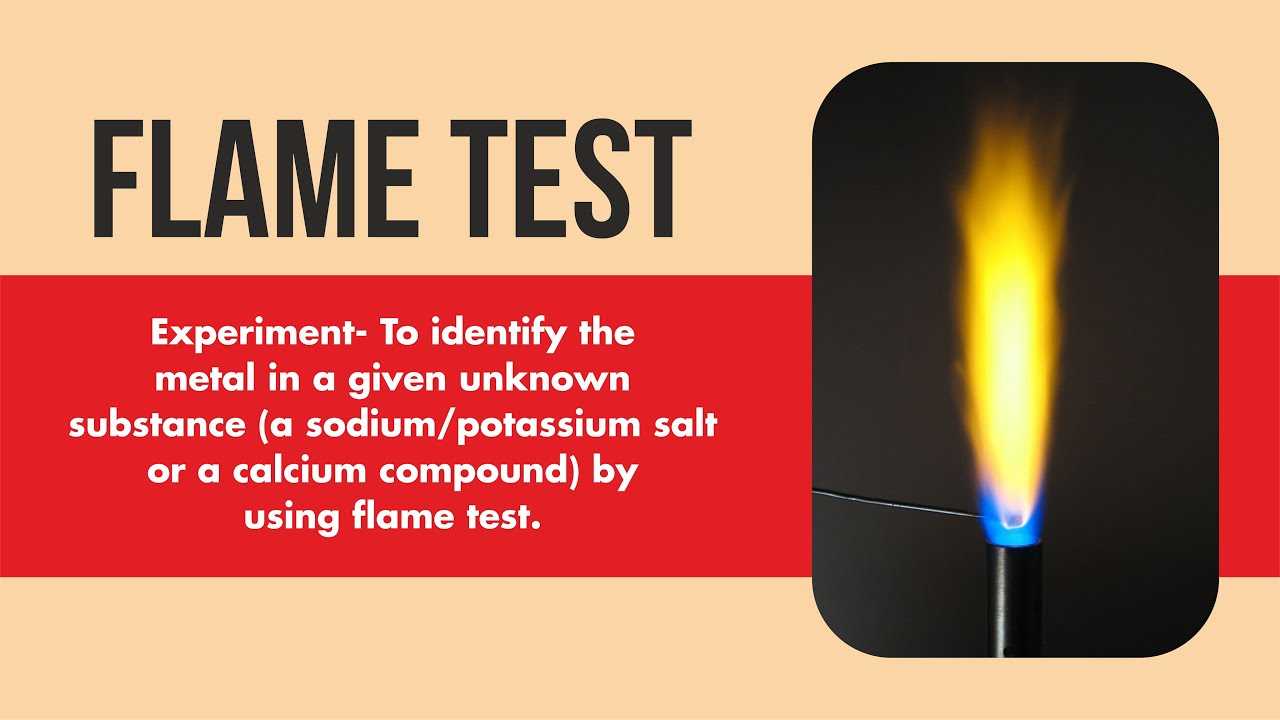
In scientific studies, identifying the presence of different elements through their unique reactions to heat provides valuable insights. This method allows researchers to distinguish between various substances based on their behavior when exposed to high temperatures. The process involves observing the color changes produced, which serve as a clear indicator of specific materials.
By examining these reactions, scientists can gain a deeper understanding of the chemical properties and composition of various compounds. The visible spectrum of colors emitted during these experiments plays a crucial role in revealing the identity of the substances involved.
In this section, we explore how different elements react to heat and how their unique characteristics can be observed. Each reaction provides important information, offering a practical approach for identifying and studying elements in a controlled setting. The technique is both simple and powerful, enabling precise identification with minimal resources.
When certain materials are heated, they emit distinct colors that can be observed with the naked eye. These color changes occur due to the excitation of atoms and ions within the substances. The specific hue produced depends on the type of element or compound involved, making it possible to identify its chemical composition based on the emitted light.
Each element has a unique set of energy levels for its electrons, and when heated, electrons absorb energy and jump to higher levels. As they return to their original state, they release energy in the form of visible light. The wavelength of this light corresponds to a particular color, which can be used to identify the chemical present in a sample.
For example, lithium compounds produce a red glow, while copper compounds emit a greenish-blue hue. By comparing the colors produced in various experiments, researchers can quickly determine which elements are present in a sample. This method provides a simple yet effective approach to chemical identification without the need for complex instruments.
Essential Components for Flame Test Trials
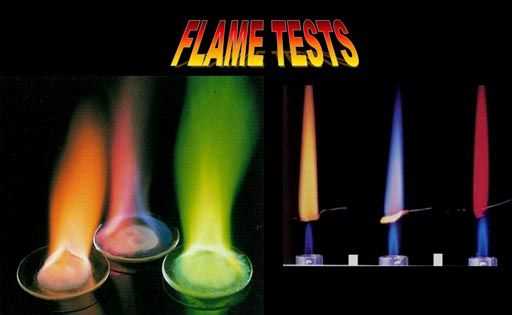
In order to conduct experiments that reveal the chemical composition of a sample through heating, certain materials and equipment are required. These components ensure the proper execution of the process and the accuracy of the results. By having the right tools at hand, researchers can perform observations effectively and identify elements based on their reactions to heat.
Required Materials
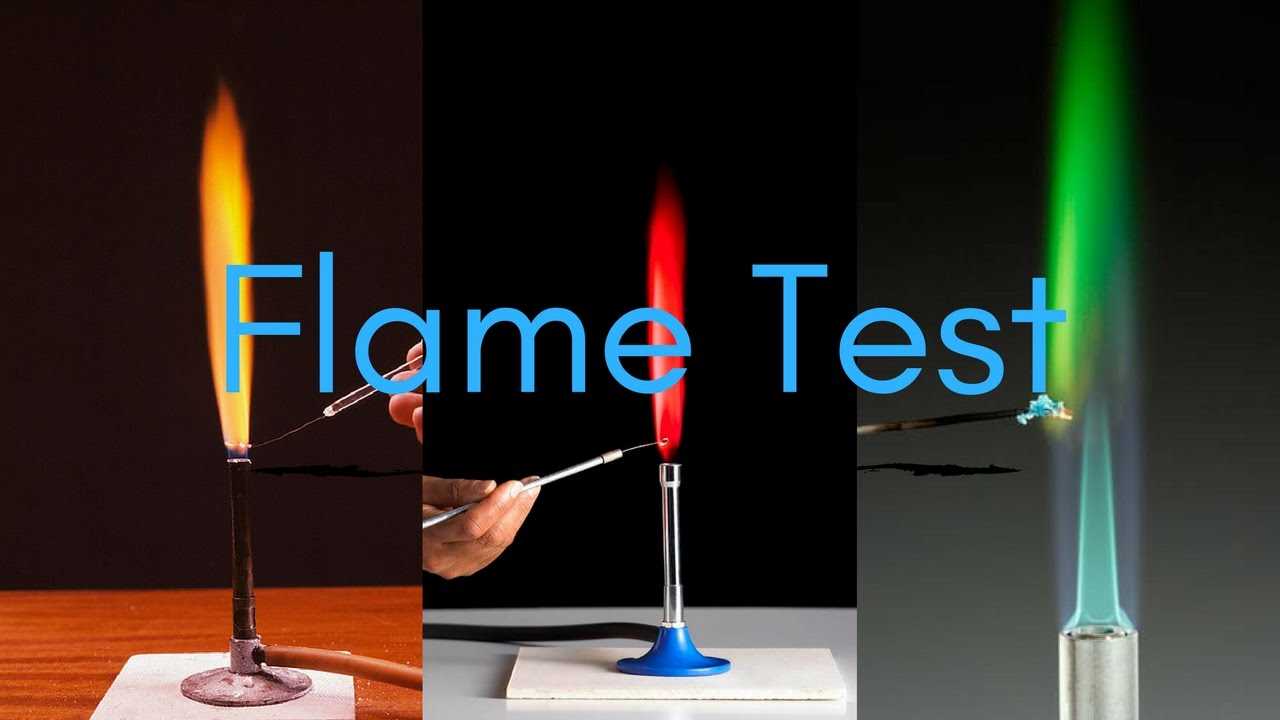
One of the most important items for this type of analysis is a heat source, such as a Bunsen burner or alcohol lamp, which provides the necessary temperature for exciting the atoms. Additionally, a clean wire loop or platinum wire is often used to hold the sample, ensuring minimal contamination during the process. It is also crucial to have a supply of distilled water to clean the equipment between different trials.
Safety and Precision
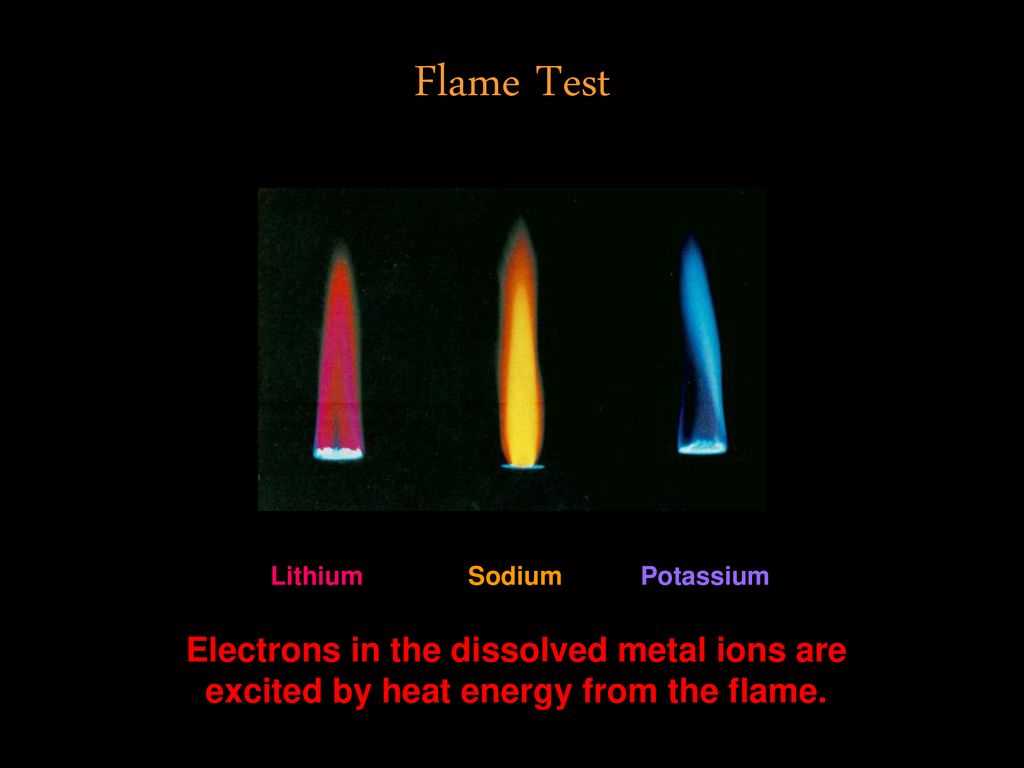
For accurate results, it is essential to use high-quality chemicals that can produce distinct reactions. Each element must be carefully chosen based on its ability to emit a recognizable color when exposed to heat. Safety precautions, such as goggles and gloves, are also necessary to protect the researcher from potential hazards during the experiment.
When conducting experiments that involve heating chemical compounds, the resulting color emissions provide valuable information. These colors correspond to specific energy transitions within the atoms of the substances, and understanding them is key to identifying the materials being tested. Observing these reactions allows scientists to deduce the elements present in a sample without requiring complex analytical tools.
Each element releases light at distinct wavelengths when heated, and these wavelengths correspond to different colors. By matching the observed color with known reference values, researchers can identify which elements are present in a given substance. For instance, a bright red glow typically indicates lithium, while a greenish-blue hue might point to copper. Comparing these color outputs to established data tables allows for accurate identification and analysis.
Careful attention to the intensity and consistency of the color can further enhance the precision of these observations. Variations in brightness or hue can sometimes signal the presence of specific chemical forms or impurities, which may affect the overall result.
Frequent Mistakes in Flame Test Methods
While the procedure for analyzing materials through heat is relatively straightforward, several common errors can compromise the accuracy of results. These mistakes often stem from improper handling, contamination, or insufficient preparation of the substances involved. Identifying and addressing these issues is essential for obtaining reliable data and ensuring the success of the experiment.
Improper Cleaning of Equipment
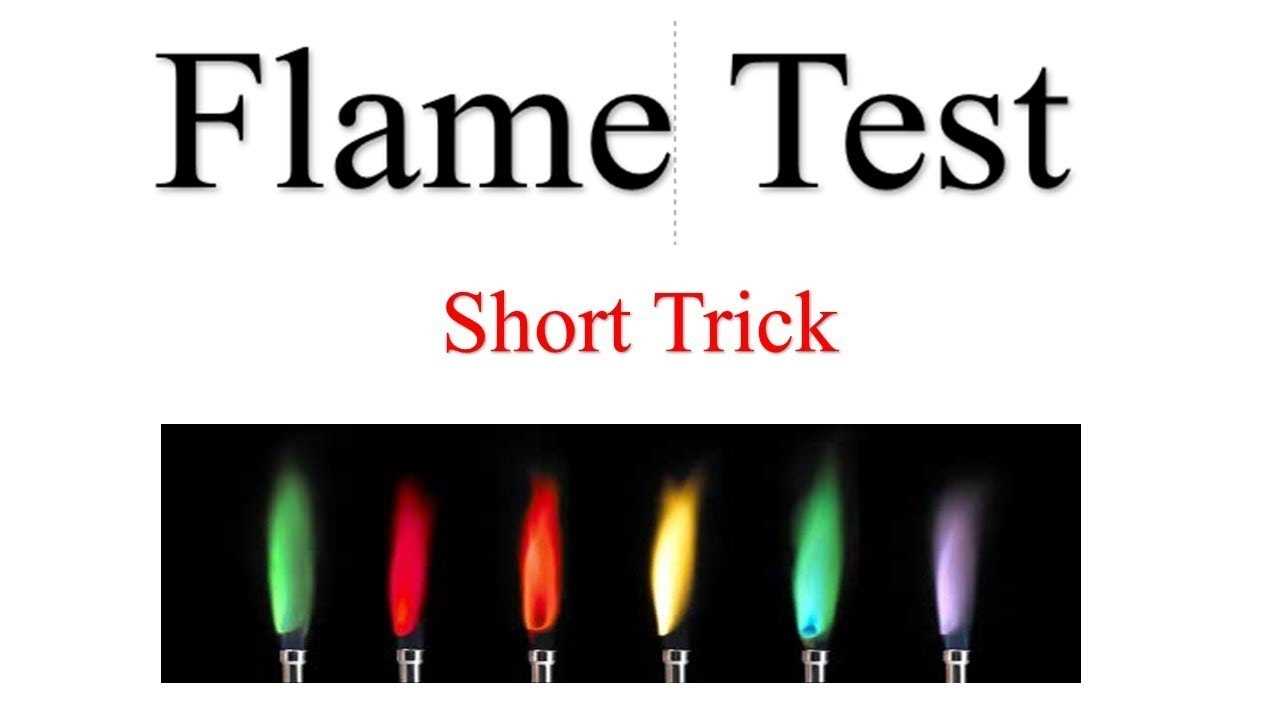
A frequent issue in experiments of this nature is the failure to thoroughly clean the tools between trials. Residual chemicals on the wire or other equipment can mix with the new sample, leading to inaccurate color emissions and misidentifications. To avoid this, it is crucial to rinse the equipment with distilled water after each use to remove any traces of previous substances.
Incorrect Observation of Color
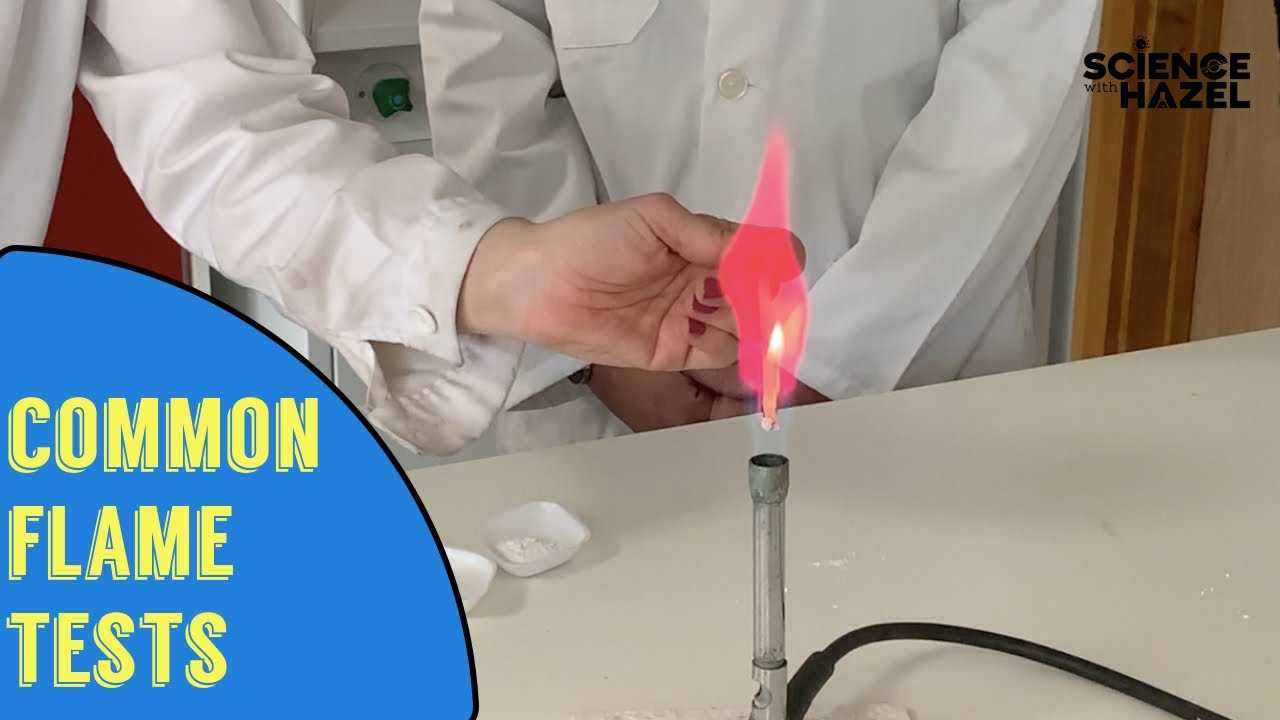
Another common mistake is not accurately observing or recording the color changes produced during heating. Environmental factors, such as lighting, can sometimes affect how colors appear. It is important to conduct the procedure in a controlled setting where the emitted light can be clearly observed without interference. Also, relying on a subjective interpretation of color can lead to errors, so it’s beneficial to compare the observed hues to a known color chart for reference.
The ability to analyze materials through heat reactions is widely used in various fields, offering a quick and effective method for identifying chemical compositions. This technique provides valuable insights in industries ranging from education to industrial manufacturing. Below are some notable applications where this method is essential:
- Environmental Analysis: This method is often used to detect trace amounts of metals in soil and water, helping monitor pollution levels and ensure environmental safety.
- Forensic Investigations: It aids in the analysis of unknown substances found at crime scenes, helping to identify chemicals that could be linked to criminal activities.
- Material Quality Control: In manufacturing, it is employed to test the purity of raw materials and verify that the correct metals and alloys are used in products.
Aside from these key industries, the technique is also applied in education, where it serves as a fundamental tool for demonstrating basic principles of chemistry. It allows students to visually experience the behavior of different elements when subjected to heat, creating a hands-on learning experience.